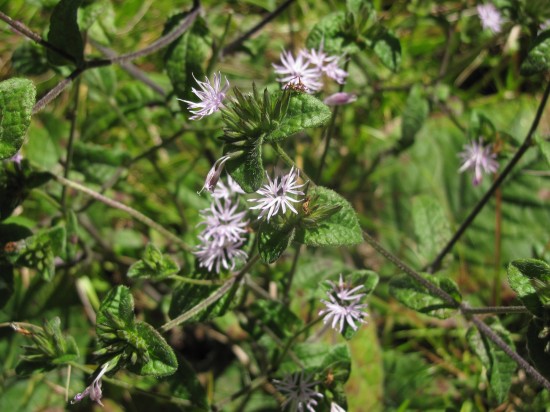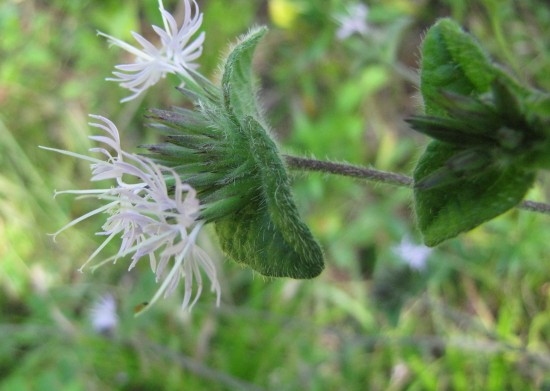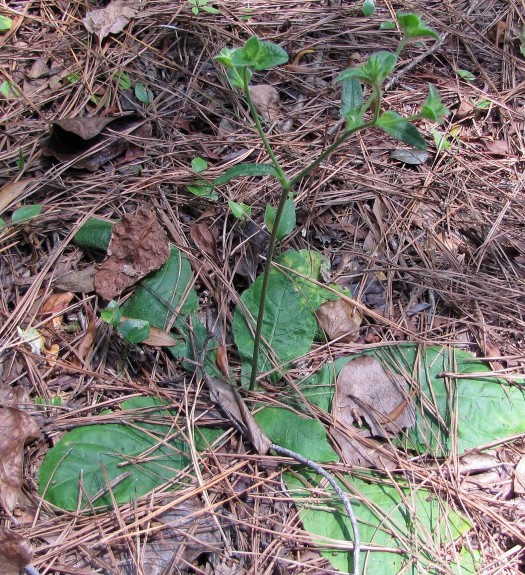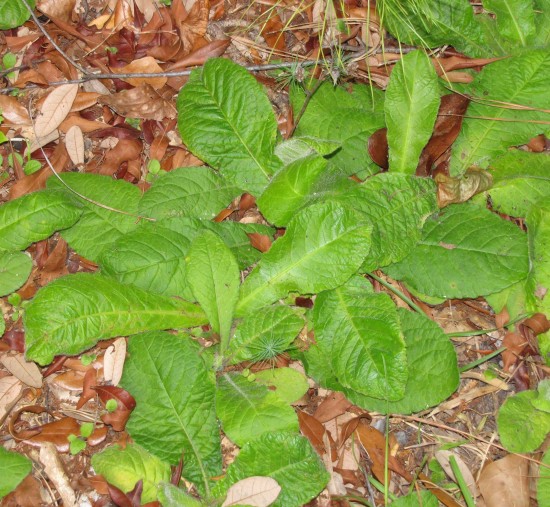NC Native Plant Society:
Plant Details
Elephantopus tomentosus
Common Elephant's-foot, Elephant's Foot, Devil's Grandmother
Scientific Name: |
Elephantopus tomentosus |
|---|---|
Genus: |
Elephantopus |
Species Epithet: |
tomentosus |
Common Name: |
Common Elephant's-foot, Elephant's Foot, Devil's Grandmother |
Plant Type |
Herb/Wildflower |
Life Cycle |
Perennial |
Plant Family |
Asteraceae (Aster Family) |
Native/Alien: |
NC Native |
Size: |
1-3 ft. |
Bloom Color(s): |
Pink, Purple |
Light: |
Part Shade - 2 to 6 hours of sun per day, Less than 2 hours of sun per day |
Soil Moisture: |
Dry |
Bloom Time: |
August, September, October, November |
Growing Area: |
Mountains, Piedmont, Sandhills, Coastal Plain |
Habitat Description: |
Woodlands and woodland borders, usually fairly dry. Common in NC Coastal Plain and Piedmont, rare in the Mountains. |
Leaf Arrangement: |
Basal |
Leaf Retention: |
Deciduous |
Leaf Type: |
Leaves veined, not needle-like or scale-like |
Leaf Form: |
Simple |
Life Cycle: |
Perennial |
Wildlife Value: |
Has some wildlife value |
Landscape Value: |
Not Recommended for home landscapes |
State Rank: |
S5: Secure (*Key) |
Global Rank: |
G5 - Secure (*Key) |
Notes: |
Leaves are mostly basal, although there may be a few small alternate leaves along the stems. Elephantopus carolinianus, Carolina Elephant's-foot, is also found throughout North Carolina, and has similar flowers but instead of basal leaves it has well-developed, alternate leaves along the stem. |
|
In bloom Small though the flowers are, Elephant's Foot attracts butterflies and other pollinators. Paynter, Wilmington, 9.1.2013 |
|
|
Closeup of flowers Paynter, Wilmington, 9.1.2013 |
|
|
Plant structure The large hairy leaves flat to the ground give the plant one of its common names. The stem has few or no small leaves and divides into the flowering stalks. Paynter, Wilmington, September |
|
|
Basal leaves Common Elephant's Foot (E. tomentosus) is very like its close relative, Smooth Elephant's Foot (E. nudatus). The leaves are wider and the dense hairs, especially on the underside, are spreading or reflexed, not appressed Paynter, Wilmington |
|
Links: |
|
back to top
go to plant details search
go to plant images search
go to gallery home
back to Initial e Gallery
back to orchids
back to Carnivorous Plants
back to Trilliums







